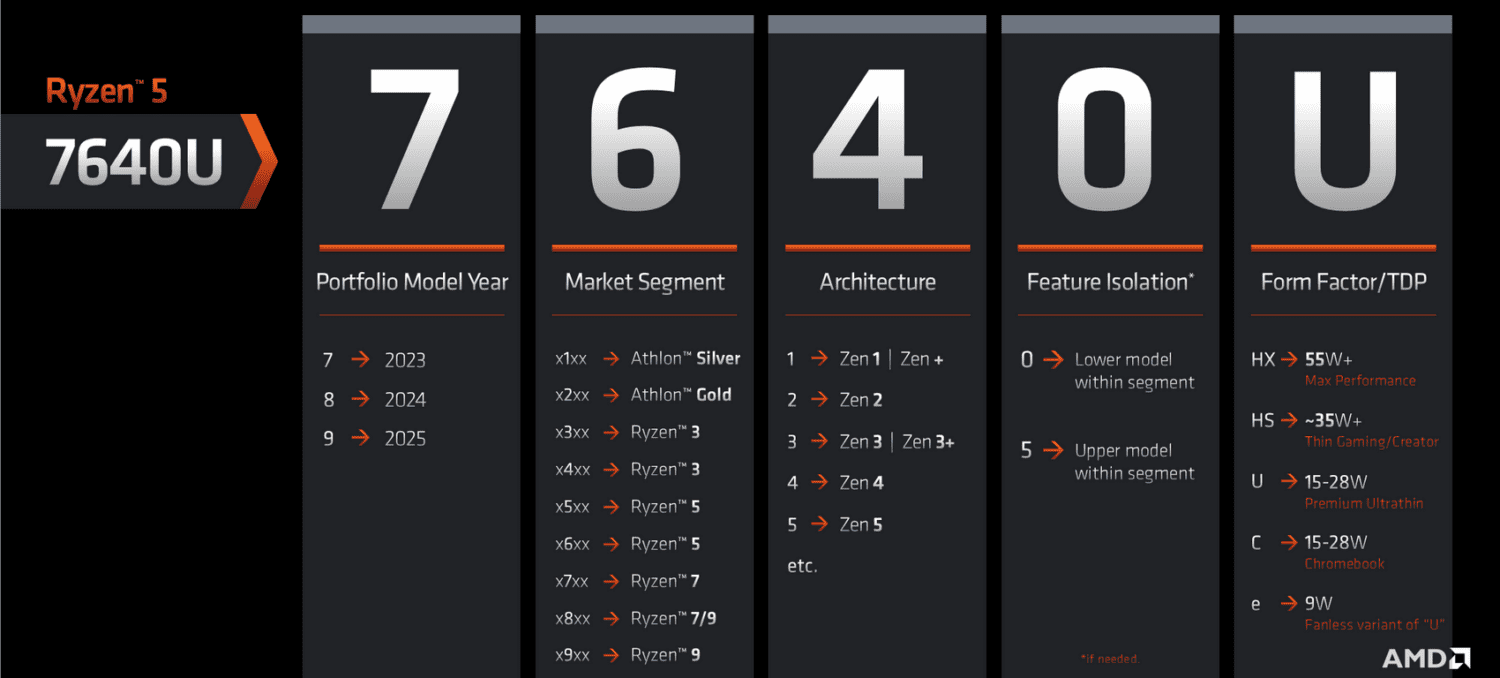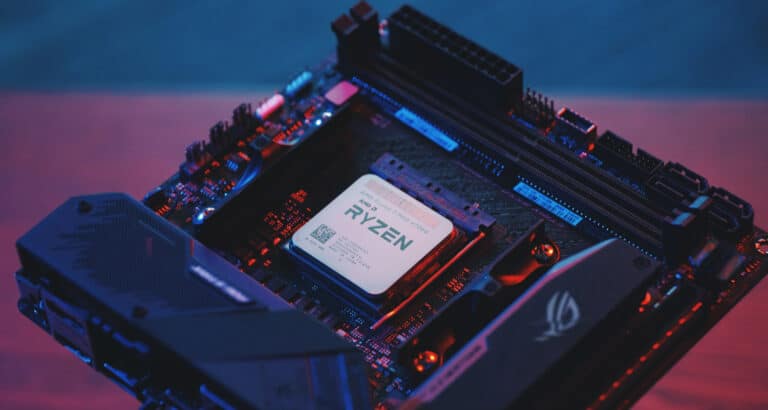Not even those who pay close attention to processor model numbers can say it’s easy to decipher what they’re all about. AMD is attempting to clarify its product lines by revamping laptop CPU model numbers.
Each model number should ideally express information about the chip’s core technology and capabilities, making it easy to distinguish between a new chip and an old chip or a fast chip and a slow chip.
However, model numbers also play a marketing role for AMD and PC manufacturers that wish to show their systems use the most up-to-date processors.
To alleviate the tension, AMD announced an overhaul of its laptop CPU model numbers. The revamp will take effect in 2023 when Ryzen 7000-branded laptop CPUs start to ship.
How does AMD break it down?
Here’s the plan, according to AMD:
- Portfolio Year: Gives you a sense of what model year the processor lives in. Are we actively selling it as a current-gen product in that year?
- Segment: Helps us communicate “at-a-glance” performance to customers browsing in the store. For example, Ryzen 9 are always our fastest and most feature-rich processors. This helps customers cross-shop at a glance, and is the most common way customers compare CPUs.
- Architecture: A nod to our enthusiast customers, we wanted to make sure you could see what version of “Zen” lives inside the chip. It’s important!
- Feature Isolation: A concession to architectures like “Zen 3” versus “Zen 3+,” which cannot be fully articulated in the architecture digit alone. Flipping this digit between 0 or 5 ensures that two different architectures don’t end up in the same Ryzen 70xx family.
- Form Factor/TDP: AMD’s innovation and growth in the mobile space is especially evident here, where you can see we’re servicing multiple design categories across Windows and Chromebook.
Although the new numbers are clearer than the old ones, CPU model numbers continue to be slightly confusing.

